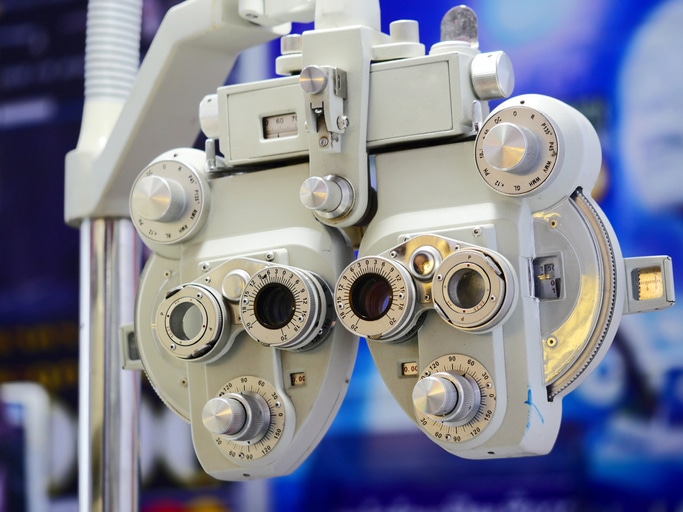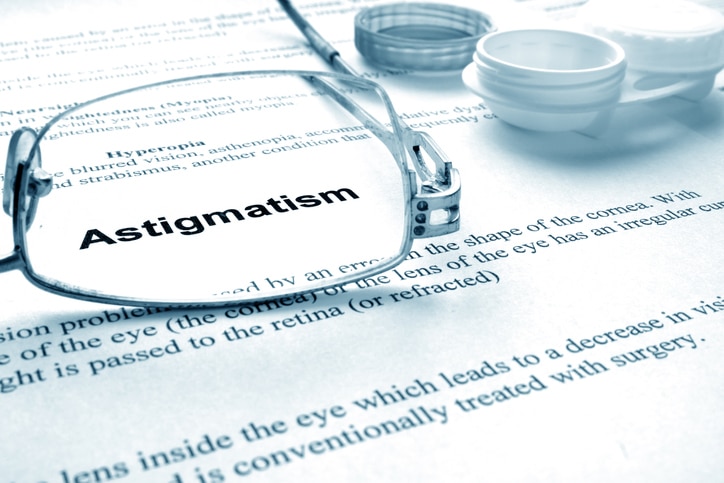Astigmatism
What is Astigmatism?
Of the three main refractive errors with human vision, astigmatism is the least understood. With myopia, the refractive error is on distance vision, hence the colloquial term “nearsightedness.” With hyperopia, the opposite is true, and the refractive error is with up-close vision, “farsightedness.” The third refractive error is astigmatism. It doesn’t have a common name, is misunderstood by most people (many who think they have “a stigmatism”), and doesn’t have a single phase of incorrect refraction, instead distorting a wide range of vision.
But we understand astigmatism at Jacksonville Eye Center, and have various vision correction options to fix yours and give you clear eyesight. Here’s some information on this common eye condition.
Astigmatism is a very common imperfection with the eye’s ability to accurately focus light. The main cause of astigmatism is when the cornea, the clear round dome covering the eye’s iris and pupil, is imperfectly shaped. Normally, the cornea is round like a baseball. But if you have astigmatism, the shape of your cornea is more oblong like a football. This affects how light rays are refracted into the eye, making objects at various distances appear blurred. Light is focused on several different points within the eye, rather than forming a single, clear focus point on the retina.

What Are the Causes of Astigmatism?
In most cases, people with astigmatism are born with the condition. Most people have some degree of astigmatism. It is most likely an inherited condition. You can develop astigmatism after having an eye disease, eye injury, or eye surgery. You cannot develop astigmatism from reading in low light or from sitting very close to the television.
What Are The Astigmatism Symptoms?
Astigmatism usually causes the vision to be blurry or distorted to some degree at all distances. Because of this, people with astigmatism suffer from:
These problems make it important for you to be sure your child has regular eye exams; astigmatism may be hindering his or her development in school.
Is Astigmatism A Common Disorder?
Research shows that almost one third of the population has some degree of astigmatism. In some cases, the eye can change shape over time, so that astigmatism can appear or worsen with age. Astigmatism won’t correct itself, but in many cases it is mild enough to not merit correction through eyeglasses or contact lenses.
Astigmatism Measurements In Jacksonville, Florida

At Jacksonville Eye Center, when we examine your eyes we’ll give you a prescription for vision adjustment, if you need it. This is how you understand what the numbers mean.
Astigmatism is measured in “diopters.” A perfect eye with no astigmatism has 0 diopters. Most people have between 0.5 and 0.75 diopters of astigmatism. If you have a 1.5 or over, you’ll typically need correction with glasses or contacts to maintain clear vision. These correct astigmatism by counteracting the uneven curvatures of your cornea and lens.
Astigmatism Diagnosis
During our comprehensive eye exams at Jacksonville Eye Center, we’ll have you perform a variety of tests to measure your visual acuity. We’ll measure the curvature of your cornea with a keratometer. With these tests, and a few others, we’ll know if you have astigmatism, and we’ll be able to determine the power of correction you need to attain clear vision. For that, we’ll usually use a photopter — that’s the instrument where we flip out lenses and ask you which option was better than the other.
Patient Testimonials
Astigmatism Treatment At The Jacksonville Eye Center
Like its refractive error compatriots myopia and hyperopia, astigmatism can usually be corrected with eyeglasses, contact lenses, or refractive surgery.
Nonsurgical Options
Eyeglasses
Eyeglasses are made with lenses that help compensate for the uneven shape of your eye. The lenses make the light bend into your eye properly. The same glasses can correct for near or farsightedness.
Contact Lenses
Formerly, only hard/rigid contact lenses could correct astigmatism. But now soft contact lenses called toric lenses can handle astigmatism, while also correcting for myopia or hyperopia. These contact lenses are different than typical lenses. Each lens has a tiny vertical line on it toward the edge of the lens. This line is to be at the top of your eye when placing the contact lens onto your eye. The lens doesn’t rotate like a regular contact, but stays oriented in that way to correct for the shape of the cornea.
Surgical Options
Refractive Surgery
We can use a laser to reshape the curves of your cornea in refractive surgery. These are the types of refractive surgery for astigmatism:
Laser Vision Correction (LASIK)
In this surgery, we make a thin, hinged flap in your cornea for access. An excimer laser then sculpts the shape of the cornea and we replace the flap. In LASIK and the other laser surgeries that follow, the laser can make slits in the cornea called corneal relaxing incisions. These allow the cornea to attain a more normal round shape, correcting for astigmatism.
Laser-Assisted Subepithelial Keratectomy (LASEK)
Rather than creating a flap, in LASEK, we use alcohol to loosen the cornea’s thin protective cover (the epithelium). Then an excimer laser changes the curvature of the cornea. We then reposition the loosened epithelium.
Photorefractive Keratectomy (PRK)
This is similar to LASEK, but we remove the epithelium. We then reshape the cornea, and the epithelium will regrow over the next few weeks.
Newer Surgeries
Newer surgeries offer the promise of implantable contact lenses. This is similar to how we treat cataracts. We remove the cataract-clouded lens and replace it with a permanent artificial lens.
Dr. Schnipper Will Help You Choose the Best Treatment Option for Your Astigmatism

Your choices for correcting your astigmatism and near or farsightedness may seem daunting. But the team at Jacksonville Eye Center will walk you through each option, along with the various pluses and minuses with each, so that you’ll feel comfortable choosing the best solution for your eyes.
What Happens if Astigmatism Goes Untreated?
Astigmatism doesn’t usually change or worsen. But it doesn’t improve either. So, if you know you have astigmatism but opt not to correct the refractive errors, you’ll have to deal with continual eye strain, possible headaches, and you’ll find you’re squinting quite a bit.
With the multiple options available today, there really isn’t any reason not to correct your vision for astigmatism with the team at Jacksonville Eye Center.
Schedule a Consultation
If you have astigmatism, Dr. Schnipper at Jacksonville Eye Center offers many treatment options. Call our Jacksonville office at 904-355-5555 to schedule a consultation.
